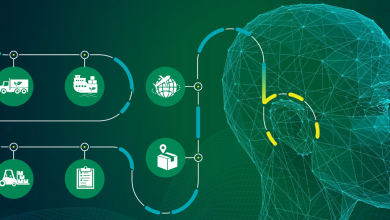Hyper Automation is about automating the business processes end to end. It can be done by using AI, RPA, and Machine Learning in enterprises. These technologies help in automating the routine procedures used by the enterprise human resources. Enterprises are using bots for automating tasks in different processes like email, printing, scanning, signing, workflow, and data storing. Digital transformation initiatives are being executed in enterprises using AI, RPA, ML with digital automation technologies. Hyperautomation provides the capability to integrate different digital automation technologies to achieve the Digital Transformation benefits. It helps in providing predictive analytics for quicker decision-making.
Hyperautomation helps in improving enterprise agility and business performance. Enterprises can improve efficiencies and improve productivity within the workforce using automation technologies. It helps in improving the cost reduction and cutting down the operational overhead for the enterprise. Manual and monotonous tasks can be automated to improve the business cycle time and achieve efficiency in delivering the product to the customers. Many enterprises are taking the initiative to adopt hyper-automation technologies. They are creating strategies and planning to execute their business processes using hyper-automation. There are planning their processes, workflows, and infrastructure to align with digital transformation strategies.
Hyper Automation Technologies
Enterprises are looking at different data sources to handle content, documents, and structured data. The goal is to improve operational efficiencies and make the business profitable. RPA bots help in automating simple tasks like scanning, emailing, printing, messaging, and data transformation. Natural Language Processing and Natural language understanding tools are being used to parse the content and generate information for business insights. No-code platforms are being used for different applications related to AI/ML, Chatbots, and Computer vision. Enterprises can achieve consistent execution, precise result generation, and high performant processing using hyper-automation technologies.
Applications
Hyperautomation is helping enterprises to achieve customer experience and engage customers. They help in automating sending customer campaigns. These technologies can gather customer leads, campaigns, and transactions to check and track marketing performance. Customer journeys are analyzed on different touchpoints and channels to check for high performant and low performant journeys. Customer satisfaction improves by making the customer avoid low-performant journeys.
HyperAutomation technologies are helping out the health care industry for improving patient experience and automating billing cycles. The key processes like bill collection, payment processing, health records processing, doctor note-taking, prescription scanning, and big data handling are being automated using hyper-automation. The other areas of business where hyper-automation is being applied are banking, finance, accounting, invoice management, compliance, and regulations. In the retail industry, the business processes like inventory management, order processing, loyalty management, procurement handling, supplier management, and logistics are being automated by using these hyper-automation technologies.
Benefits
Hyperautomation helps in seamless data integration across different systems, apps, and data sources. Enterprises use hyper-automation technologies to create a data lake for enterprise decision-making and dashboards. With low code and no code automation, enterprises are cutting down the IT budget for development and focusing on improving efficiencies. Cloud-based development and deployment with DevOps are helping them to meet time to market needs. Business users are able to manage the maintenance upgrades and functionality enhancements using the no-code platforms.
These technologies help improve agility in enterprise business, magnify the impact and span of automation in the enterprise, and enterprise departments collaboration. Hyperautomation increases employee efficiency, productivity, and engagement. They create an environment for the employees to have a better experience and get satisfaction for their contributions. In manufacturing, these technologies are improving worker safety, production output, and product quality. It also brings down the cost of the product and factory lead times.
Across different verticals, hyper-automation has reduced outsourcing and improved insourcing. These technologies have helped improve communication and collaboration across the teams in the enterprises. Enterprises have better access to information because of hyper-automation initiatives in data engineering.
What’s Next ?
Enterprises have a great opportunity in new normal to use these technologies to automate customer service, know your customer process, sales, human resources, recruiting, employee onboarding, vendor management, and partner management processes. There is a huge opportunity to use hyper-automation technologies with digital platforms to get the full benefit of operational efficiency and improve the cycle time in the processes. These technologies can help in enterprise risk management, customer advisory processes, middle office, and back-office operations.
It is important for enterprises to focus on the existing systems and apps functioning while adopting hyper-automation technologies. Enterprises need to invest time in sharing business cases and case studies with their internal stakeholders before adopting these technologies. There needs to be a buy-in from the different stakeholders to reap the benefits. The least resistant path will be helpful to kick start some of the initiatives to get the buy-in and improve efficiencies quickly. After initial successes, teams feel comfortable presenting their ideas without fear of hyper-automation. This method of incrementally bringing down the fear and parallel getting the buy-in is a well-proven methodology for implementing new process methodology.





